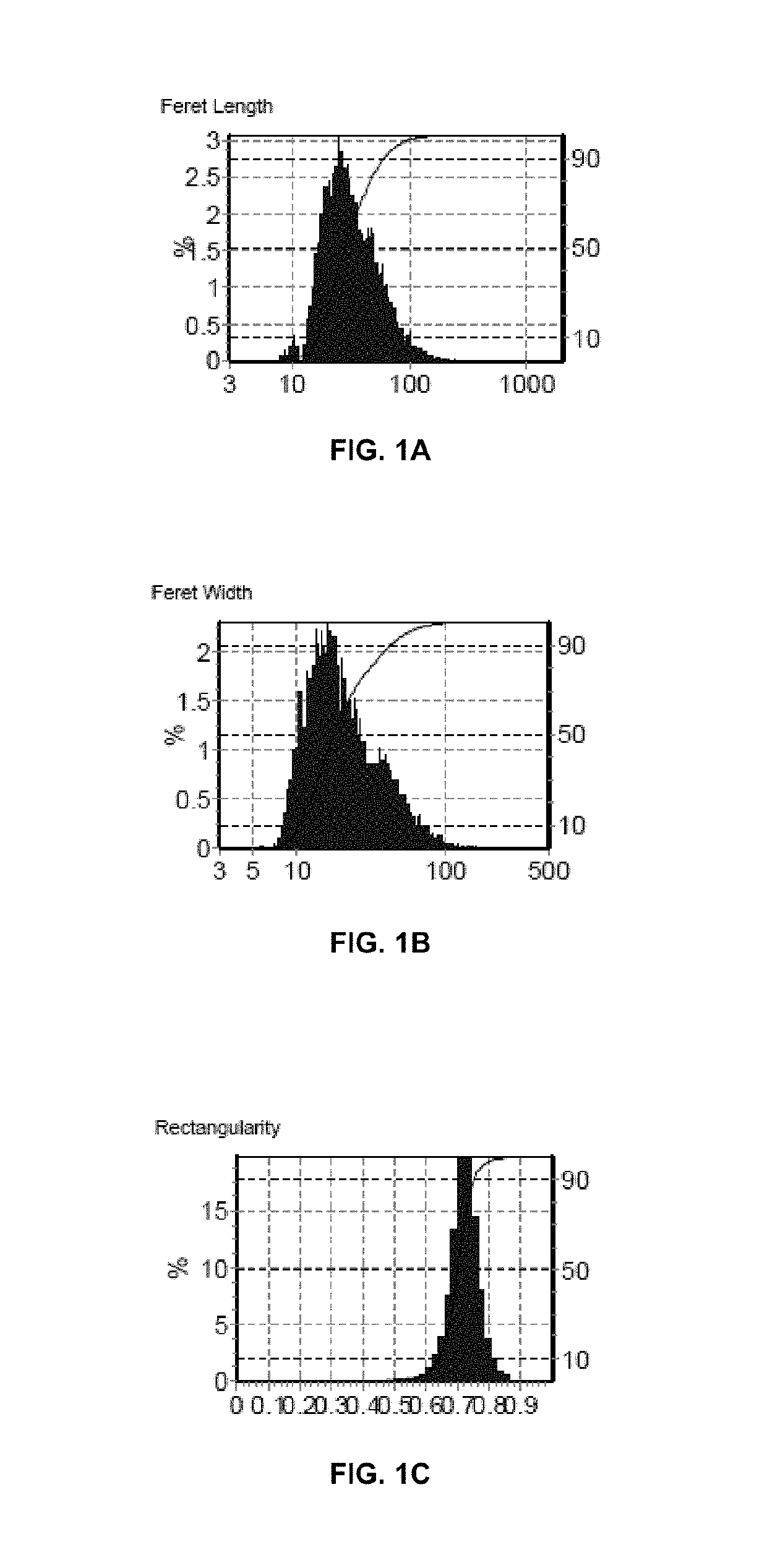Fingerprint powder
a fingerprint powder and powder technology, applied in the field of fingerprint development, can solve the problem that dusting with powder cannot copy fingerprints clearly
- Summary
- Abstract
- Description
- Claims
- Application Information
AI Technical Summary
Benefits of technology
Problems solved by technology
Method used
Image
Examples
example 1
or Making Polycyanoacrylate Polymer
[0024]A mist of water droplets is created in a stainless steel-lined reaction chamber having a volume of approximately 8 cubic feet. Then, 500 grams of ethyl 2-cyanoacrylate is slowly dripped into the mist, producing an exothermic reaction. Polymer created by the reaction coats the inner walls of the reaction chamber. The rate of addition of the ethyl 2-cyanoacrylate is decreased or temporarily halted if the temperature in the reaction vessel reaches 50° C. After all of the ethyl 2-cyanoacrylate has been added, the reaction mass is allowed to cool for about 10 minutes to ensure that the final product temperature remains below 50° C. Any condensed water is then poured out, leaving a gummy or taffy-like substance adhering to the walls of the reaction chamber. The substance is scraped out of the container and pressed between two stainless steel plates each having an area of approximately 2 square feet to express water from the substance (polymeric mas...
example 2
or Producing Powdered Polycyanoacrylate Product
[0025]The polymeric mass is then transferred into a burr grinder, where it reduced to a powder having a particle diameter in the range of from 1 to 200 microns, with a median particle diameter of approximately 20 microns and a mean particle diameter of approximately 60 microns.
[0026]Samples of product of the invention produced in accordance with the above method were analyzed by Microbac Laboratories (Hauser Division, Boulder, Colo., USA) via the following processes to determine various parameters of the particles, including the feret lengths and widths of the particles and the rectangularity of the particles:
[0027]1. Particle size distribution was measured using laser light scattering;
[0028]2. Skeletal density was determined via gas displacement density analysis;
[0029]3. Particle shape analysis was conducted using a dynamic image analyzer.
[0030]Results of feret length and width analysis and rectangularity determination were as follows:...
example 3
Using the Powdered Polycyanoacrylate Product to Detect Fingerprints
[0035]An example of a method of using the powdered polycyanoacrylate polymer is as follows:
[0036]1. Weigh out 0.04-0.12 grams of powder per cubic foot of fuming space and place it in an aluminum fuming dish;
[0037]2. Place the fuming dish on the a plate within the fuming chamber;
[0038]3. Set the fuming chamber relative humidity to 80%;
[0039]4. Turn the hot plate to 220° C. and set the run time to between 13 and 30 minutes; and
[0040]5. When the run is completed, photograph, lift, or otherwise process prints using standard fingerprint collection methods.
[0041]The powdered form of polycyanoacrylate made available by the present invention facilitates significant improvement in accurate weighing and measuring by the user when the product is used to detect fingerprints. The powder can more effectively be measured by weight using conventional methods, while posing little or no threat of exposure to fumes for the user. In its...
PUM
| Property | Measurement | Unit |
|---|---|---|
| feret length | aaaaa | aaaaa |
| particle diameter | aaaaa | aaaaa |
| feret width | aaaaa | aaaaa |
Abstract
Description
Claims
Application Information
 Login to View More
Login to View More - R&D
- Intellectual Property
- Life Sciences
- Materials
- Tech Scout
- Unparalleled Data Quality
- Higher Quality Content
- 60% Fewer Hallucinations
Browse by: Latest US Patents, China's latest patents, Technical Efficacy Thesaurus, Application Domain, Technology Topic, Popular Technical Reports.
© 2025 PatSnap. All rights reserved.Legal|Privacy policy|Modern Slavery Act Transparency Statement|Sitemap|About US| Contact US: help@patsnap.com



